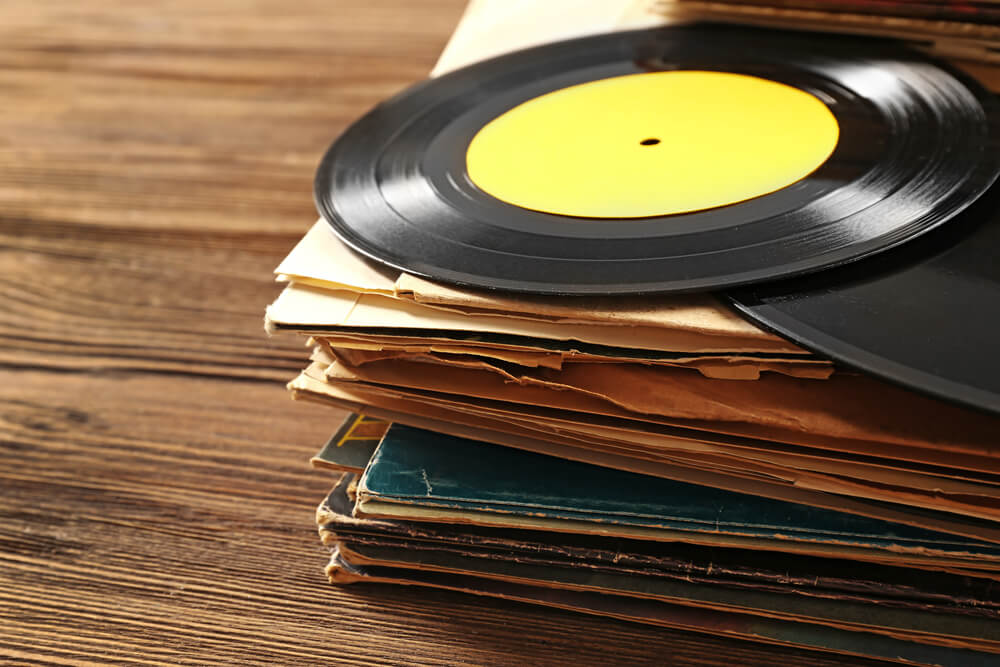In a perfect world, record players wouldn’t show any wobble at all. However, in the real world, more than half of them do.
A little wobble is often forgiven and well tolerated. But if you’re reading this, your player is probably wobbling much more than that.
Record players are relatively simple machines, which often means that you can do quick repairs, and resuscitate them.
Here’s how to fix a wobbly record player in 7 simple steps.
What’s the Right Way to Fix a Wobbly Record Player?
Make sure that the problem isn’t coming from the vinyl records, then, check the spindle and platter. Next, replace the bearings or supports as needed. If all else fails, it’s recommended to take the record player to a specialized technician for further checks.
When Is Wobbling in a Record Player Problematic?
Most people ignore a noticeable wobble in the record player if it doesn’t really affect the sound quality or compromise the hardware.
There are some cases where such wobble could be problematic, and it’s best to address the causes and fix any malfunctions.
The following are often red flags and a clear call to action!
- The platter is wobbling too much (more than 5mm), and so, could harm the vinyl records.
- A full bump (dip and rise) is pushing back against the needle and cartridge.
- The wobble is impeding the needle from proper tracking.
- The sound is coming off broken and screechy.
What Could Be Causing the Wobble in the Record Player?
The ideal zero-mm wobble can be a rare occurrence in real life. Common manufacturing issues could create a tiny wobble ranging from 0.1 to 1.0 mm. This is often unnoticeable except with technical tools and accurate measuring devices.
A more pronounced wobble reaching 5 mm wouldn’t go past an audiophile, but it can still be forgiven. This could be the result of poor workmanship, wrong storage, or subjecting the record player to high temperatures.
Related: Rega Planar 1 Vs 2
A wobble that is more than 5 mm can be hard to live with, and that is usually a discrepancy between the platter and the bearings.
Another reason why a record might sound ‘jumpy’ might be caused by a worn-out spindle. This is a component that needs replacement every two years, or around 1000 hours of playtime. And when it gets old, it starts acting weird and wobbly.

Can the Problem Be Caused By an External Factor?
The wobble could also be caused by an external factor, which is the vinyl record itself. There are several defects that can warp the evenness of the record. And that would contribute to the jumpy attitude of the record player as well.
If the vinyl record has been sitting beneath a heap of other records, it could become all bendy. Also, if it was pinched from one side by the uneven pressure of adjacent record covers, it could also warp.
Is There a Checklist for Probable Causes of a Wobbly Record Player?
So, in a nutshell, the main causes of a record player being wobbly are as follows:
- Manufacturing errors
- Aging of the hardware
- A platter needs leveling
- The spindle is worn out
- The vinyl record is warped
How to Fix a Wobbly Record Player?
There are a few quick fixes that can sort out the wobbly record player problems. But first things first:
Step 1: Check the Paperwork
Before peeping under the hood, it’s important to make sure that the device isn’t still within the warranty period. Any intervention on your side could void the warranty, and that could prevent you from getting suitable repairs or a replacement unit.
Having checked the paperwork, this is what you need to do next.
Step 2: Check the Vinyl Records
Quite often, the reason why the record player has been acting out has to do with the records rather than the player.
Check the records for signs of damage, warping, lodged dirt, or cracks. Some of these issues can be fixed using simple processes.
Step 3: Spring Cleaning Is Always Good
Remove the cover and start cleaning all the components of the record player. Dust accumulation can cause all kinds of issues in moving and electronic parts.
Be as gentle as possible while blowing away the dust.
Step 4: Check the Platter Level
There are some elaborate (and costly) tools in the market to measure how straight the surface of the platter is. You don’t really need to go that far.
Start with placing the platter on an even straight surface, and see if it’s lying flat. If it has dips and rises, then the platter needs replacement.
You can also place a spirit level on the platter, and move it across the various parts of the surface. Going in a radial direction all around the platter should cover all of the platter’s surface.
If the platter is warped, then it needs to be replaced by a new one.
If not, then now you know that the problem lies elsewhere.
Step 5: Check the Rubber Suspension of the Platter
This step might sound too technical, but it’s actually pretty straightforward.
With the platter still removed, check the rubber cylinder right beneath it. Sometimes it becomes a bit unhinged, tears from one side, or becomes worn out. This would naturally cause a wobble in the platter.
To repair it, you can glue that rubber suspension in place. Make sure not to spill on the surrounding components, as that could damage the record player.
If the rubber is too far gone and all worn out, you’d need to replace it. This shouldn’t cost you much, and installing the new part is a breeze.
Must read: Pro-Ject Debut Carbon Evo vs. Rega Planar 1
Step 6: Check the Bearings
The bearings of any machine have a specific lifetime, after which they need to be replaced. As a matter of fact, all moving parts need that.

If you can’t tell whether the bearings are past their prime, then you can change them anyway after two years in service.
Step 7: Call the Maintenance Guys!
We can’t save them all!
Unfortunately, sometimes we can’t repair our beloved machines, but the service person can. Additionally, you can always treat yourself to a brand new record player!

